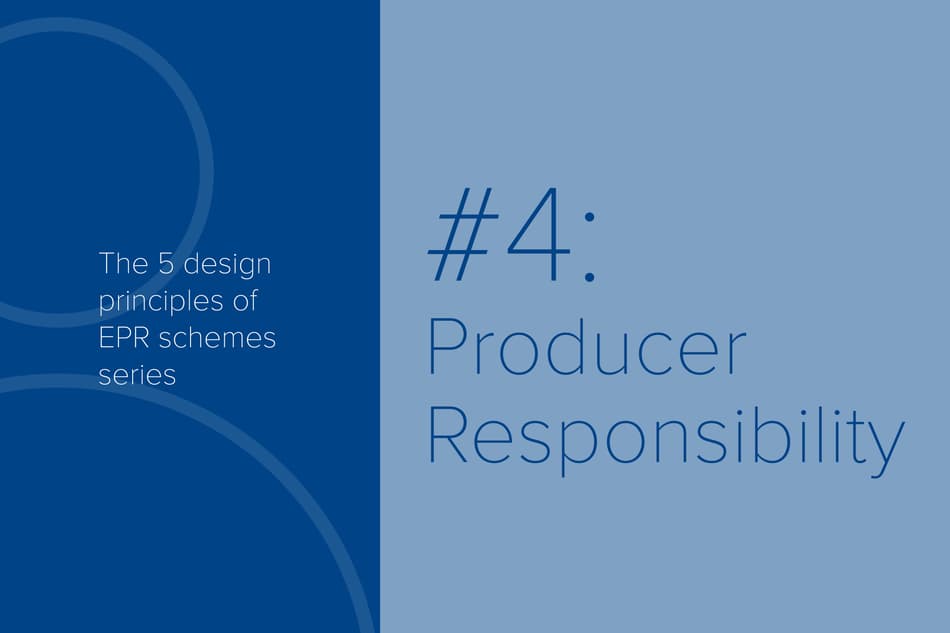
Global trends in EPR schemes: producer responsibility for consumer packaging
EPR schemes ensure that companies take responsibility for the collection, sorting, and recycling of the packaging they place on the market, from start to finish.
Extended Producer Responsibility (EPR) policies for packaging started emerging in the early 1990s, and we have seen their use grow and expand over the decades.1 Today, there has never been a stronger global push to implement this environmental policy principle, according to which companies are responsible for the collection, sorting, and recycling of the packaging they place on the market.
EPR Unpacked – A Policy Framework for a Circular Economy is our most recent white paper that serves as a resource for legislative and regulatory drafters, as well as for stakeholders affected by EPR. It offers a multi-dimensional perspective on producer responsibility – which is one of the five principles of high-performing EPR schemes.
Full cost coverage can get momentum going
Globally, the trend has been for EPR schemes to evolve from partial to full cost coverage, with producers more commonly now responsible for the entire net operational costs of the packaging they put on the market. This means that producers are typically required to cover the costs of the management of packaging waste – including collection, sorting, and recycling – as well as administrative expenditures for running the EPR program. For policymakers interested in going beyond minimum performance requirements, the scope of cost coverage can also include measures such as monitoring and consumer awareness campaigns.
In high-performing EPR systems, producers are responsible for a range of costs related to the effective management of their packaging. According to recent research by Eunomia Research & Consulting, the implementation of deposit return systems (DRS) and EPR schemes with full cost of litter clean up covered by producers are among the most successful policy measures addressing single-use plastic litter in the Mediterranean region.2
Unlike partial cost coverage, where any remaining costs fall on municipalities and taxpayers and thereby has various limitations, full cost coverage EPR schemes have proven to achieve significantly higher recycling rates and reduce litter due to the dedicated source of financing. Legislation should determine the relevant costs and the share that falls under the responsibility of the producers, as well as material ownership and geographical coverage. Policymakers should consider creating geography-neutral and material-neutral approaches when setting targets to avoid distortions in the market. Without well-defined measures, producers will naturally focus on materials with the highest collection efficiencies and the lowest cost instead of acting responsibly for the packaging materials and tonnages they place on the market.
Private sector to lead efforts with sufficient oversight
In theory, the principle of EPR requires individual producers to manage their packaging after use and ensure appropriate processing. However, when it comes to post-consumer packaging waste, individual fulfillment is often neither economical nor feasible in practice. Hence, producers are often given the option of collective fulfillment through an entity commonly known as a Producer Responsibility Organization (PRO). Companies contribute financially through cost-allocated fees submitted to the PRO based on the quantity and types of products they place on the market.
PROs have proven to be powerful forces in the collective implementation of EPR schemes for packaging. Alternative models without a centralized industry-run organization and strong government oversight have not proven to be successful. In some jurisdictions, there are strong views across the value chain on who should control which aspects of the system. Government-run PROs, however, are vulnerable to regulatory capture, weakening the conditions that are key for circularity.
Industry-run PROs are established and managed by the private sector, with public authorities acting as a counterbalance, responsible for controlling and monitoring the program and ensuring producers fulfill their obligations, e.g., paying fees, achieving targets, etc. For PROs run by the industry, it is important that the producers’ data is properly safeguarded in order to protect competitive information.
Initially, a single PRO structure can most effectively help establish a nation or state-wide program and allow stakeholders time to adjust to a new system. A single PRO structure offers simple implementation and a high level of control. Therefore, countries with little or no experience with EPR schemes can initially benefit from a less complex system. Governments can consider implementing a competitive landscape later if needed, once the EPR scheme is well-established.
In our next post, we will highlight how system integrity influences the performance of EPR systems – stay tuned! Do you want to learn more about the advantages and disadvantages of PRO structures? Download our complimentary white paper today.
Download Circular Economy White Paper
1 OECD. (2016). Extended Producer Responsibility: Updated Guidance for Efficient Waste Management.
